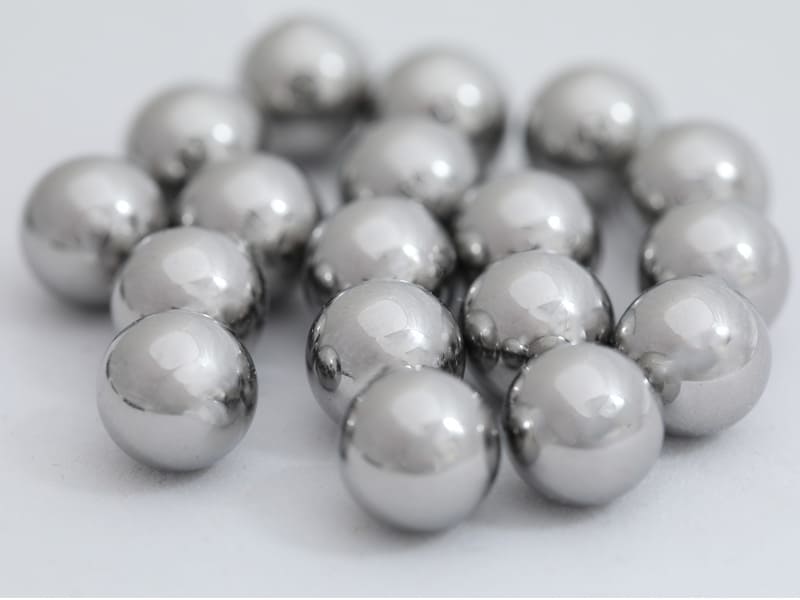Bearing balls, also known simply as "balls" or "bearing steel balls," are spherical components made from high-quality steel that are used as the rolling elements within various types of bearings. Bearings are mechanical components that enable rotational or linear movement while minimizing friction and supporting loads. Bearing balls play a crucial role in facilitating smooth movement and reducing friction between the inner and outer raceways of a bearing.
Key features and characteristics of bearing balls include:
Material: Bearing balls are typically made from high-quality steel alloys, often chrome steel or stainless steel. These materials are chosen for their hardness, durability, and resistance to wear and corrosion.
Spherical Shape: Bearing balls are precisely manufactured to be perfectly spherical, ensuring uniform contact between the rolling elements and the bearing's raceways.
Applications: Bearing balls are used in various types of bearings, including.
Radial Ball Bearings: These bearings support radial (side-to-side) loads and are commonly found in applications like electric motors, fans, and appliances.
Thrust Ball Bearings: These bearings support axial (forward and backward) loads and are used in applications like automotive transmissions and thrust applications.
Angular Contact Ball Bearings: These bearings can support both radial and axial loads and are used in applications where combined loads or precise contact angles are required.
Self-Aligning Ball Bearings: These bearings are designed to accommodate misalignment and are used in applications where shaft deflection or misalignment is expected.
Deep Groove Ball Bearings: A common type of radial ball bearing with deep raceways, suitable for a wide range of applications.
Size and Tolerance: The size of bearing balls varies depending on the bearing type and application. They are manufactured with tight tolerances to ensure consistent dimensions and accurate performance.
Surface Finish: Bearing balls have a polished and smooth surface finish, allowing them to roll smoothly within the bearing raceways and reduce friction.
Load Capacity: The load-carrying capacity of a bearing is influenced by the size, material, and design of the bearing balls. Larger balls can support higher loads, but trade-offs exist between load capacity and speed capability.
Quality and Manufacturing: The manufacturing of bearing balls involves precision processes such as forging, cold heading, and precision grinding to achieve the desired spherical shape, size, and surface finish.
Lubrication: Proper lubrication between the bearing balls and raceways is crucial to minimize friction, reduce wear, and extend the bearing's lifespan.
Cages: In some bearings, cages or retainers are used to separate and maintain proper spacing between the bearing balls, preventing them from contacting each other.
In summary, bearing balls are fundamental components of various types of bearings used in countless mechanical systems. Their precise design, high-quality materials, and manufacturing processes ensure smooth movement, low friction, and reliable performance, contributing to the efficiency and longevity of machinery and equipment.
